What Is A Darning Plate On A Sewing Machine: 2024 Guide
Welcome to the fascinating world of sewing machines! A darning plate is a useful accessory found on many sewing machines. If you’ve ever wondered what it is and what it’s used for, you’re in the right place.
A darning plate is a small metal or plastic plate that can be attached to the sewing machine’s needle plate. Its purpose is to cover the feed dogs, which are the metal teeth that help move the fabric along as you sew.
By covering the feed dogs with a darning plate, you can effectively disable them, allowing you to perform free-motion embroidery, darning, or other techniques that require manual control over the fabric’s movement.
In this article, we’ll explore the benefits of using a darning plate and how it can expand your sewing capabilities.
What is a Darning Plate?
A darning plate, also known as a darning foot or darning embroidery foot, is a specialized attachment designed to fit onto a sewing machine.
It is typically made of metal or plastic and is shaped like a flat plate with a hole in the center. The darning plate serves as a replacement for the regular presser foot on the sewing machine.
What is a Darning Plate on a Sewing Machine?
A darning plate is a metal plate that is attached to the bed of a sewing machine. It is used to guide the needle when sewing a straight stitch.
The darning plate has a slot for the needle to pass through and a hole for the thread to pass through.
The slot is slightly wider than the needle so that the needle can move up and down without hitting the sides of the slot.
The hole is slightly smaller than the thread so that the thread is held in place and does not slip through.
The darning plate is used when sewing a straight stitch. The needle is inserted into the fabric and then passed through the darning plate. The thread is then passed through the hole in the darning plate.
The needle and thread are then passed through the fabric a second time. This process is repeated until the desired length of the stitch is achieved.
The darning plate is an important part of the sewing machine. It helps to ensure that the needle is properly aligned when sewing a straight stitch. It also helps to keep the thread in place so that it does not slip through the fabric.
Purpose of a Darning Plate
The primary purpose of a darning plate is to allow the fabric to move freely under the needle while sewing. It is particularly useful when performing darning, free-motion embroidery, or quilting.
By removing the constraints of the regular presser foot, the darning plate enables the fabric to be maneuvered in any direction, giving the sewer greater control and freedom to create intricate designs.
How Does a Darning Plate Work?
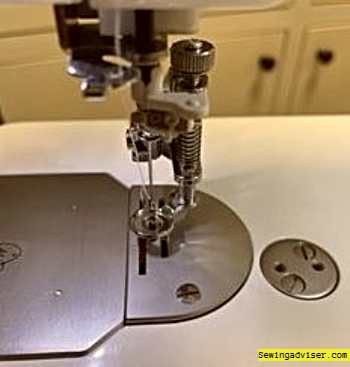
When a darning plate is installed on a sewing machine, it covers the feed dogs, which are responsible for advancing the fabric during regular sewing.
By covering the feed dogs, the darning plate prevents them from engaging with the fabric, allowing the sewer to move the fabric manually in any direction.
To use a darning plate, the user lowers the presser foot lifter, ensuring that it remains in the down position. This action disengages the tension mechanism, allowing the fabric to move freely under the needle.
The user can then guide the fabric in any desired direction, creating intricate patterns or repairing delicate areas without the limitation of a predetermined stitch length.
Types of Darning Plates
There are different types of darning plates available in the market, each catering to specific sewing needs. Here are some common types:
Standard Darning Plates
Standard darning plates are the most basic type available. They provide a smooth surface for the fabric to glide over, ensuring precise control while sewing. These plates are suitable for general darning and free-motion embroidery.
Open-Toe Darning Plates
Open-toe darning plates feature a hole in the center with an open front, allowing the user to have a clear view of the stitching area. This type of darning plate is ideal for intricate designs that require precise alignment and visibility.
Closed-Toe Darning Plates
Closed-toe darning plates, as the name suggests, have a solid front with a small hole for the needle to pass through. These plates provide stability and support to the fabric while sewing, making them suitable for repairs and thicker materials.
How to Use the Darning Plate on a Sewing Machine?
To use the darning plate, first lower the feed dogs. First, put the fabric under the needle, then lower the presser foot. The presser foot will hold the fabric in place while you sew.
Next, set the stitch length to 0. This will prevent the fabric from moving too much as you sew.
Then, start sewing slowly, moving the fabric around as you sew. You can sew in any direction that you want. The darning plate will help to keep the needle from hitting the metal plate and breaking.
When you are finished sewing, raise the presser foot and remove the fabric from the machine.
The darning plate is a great tool to use when free-motion quilting or darning. It helps to prevent the needle from hitting the metal plate and breaking. It is easy to use once you get used to it. Give it a try the next time you are sewing!
How To Install A Darning Plate?
To install a darning plate on a sewing machine, follow these simple steps:
- Raise the presser foot lifter to its highest position.
- Remove the regular presser foot by unscrewing it.
- Align the hole in the darning plate with the needle clamp screw.
- Place the darning plate on the needle clamp screw and secure it by tightening the screw.
- Lower the presser foot lifter to hold the darning plate in place.
Once installed, ensure that the presser foot lifter is lowered to allow the fabric to move freely under the needle.
How to Remove a Darning Plate?
To install a darning plate on a sewing machine, follow these simple steps:
- First, unplug your sewing machine from the power source.
- Raise the presser foot and remove the needle.
- Locate the screws that hold the darning plate in place. These are usually located at the front or back of the sewing machine.
- Use a screwdriver to remove the screws, and then lift the darning plate off of the machine.
- To reinstall the darning plate, simply reverse the above steps. Be sure to tighten the screws securely, so that the plate does not come loose while you are sewing.
How to Clean a Darning Plate
To ensure the longevity and optimal performance of your darning plate, it is crucial to clean and maintain it regularly. Follow these steps to clean your darning plate:
- Remove the darning plate from the sewing machine.
- Use a soft brush or lint roller to remove any dust or lint particles.
- If there is stubborn residue or buildup, use a mild cleaning solution and a soft cloth to gently wipe the surface.
- Dry the darning plate thoroughly before reinstalling it on the sewing machine.
Regular maintenance and cleaning will help prevent any debris from affecting the fabric’s movement and keep the darning plate in excellent condition.
Related Post: How to Clean Treadle Sewing Machine
Which Darning Plate is Right for Me?
Some things to keep in mind:
- Sewing Machine Model: Darning plates are designed to fit specific sewing machine models. Consult your sewing machine’s manual or manufacturer’s website to determine which darning plate is compatible with your machine.
- Plate Size: Darning plates come in different sizes to accommodate various sewing machine models. Measure the width of your sewing machine’s needle plate to determine the appropriate size for your darning plate. Ensure that the plate covers the feed dogs and provides a smooth surface for Darning.
- Darning Techniques: Consider the darning techniques you plan to use. If you mainly perform free-motion embroidery or free-motion quilting, a standard darning plate that covers the feed dogs will work well. However, if you intend to perform specific darning techniques like circular darning or monogramming, you might need a specialized darning plate with additional features or attachments.
- Availability of Accessories: Some darning plates come with additional accessories, such as different stitch guides or templates. If you require specific accessories for your darning projects, check if they are included with the darning plate or available separately.
How to Use the Darning Plate Brother Sewing Machine
To use the darning plate on a Brother sewing machine, follow these steps:
- Locate the darning plate: The darning plate is a small metal plate that covers the feed dogs (the teeth-like mechanism that moves the fabric through the machine). It is usually included as an accessory with your Brother sewing machine.
- Remove the presser foot: Lift the presser foot lever to raise the presser foot. This will allow you to remove the presser foot from the machine.
- Install the darning plate: Place the darning plate over the needle plate, ensuring it sits securely and covers the feed dogs. Some models may have specific slots or markings to align the darning plate correctly.
- Lower the presser foot lever: Lower the presser foot lever to secure the darning plate in place. Ensure that the object is securely fastened before continuing.
- Prepare your fabric: Choose the fabric you want to darn or mend. Place it under the presser foot, aligning it according to your desired stitching location.
- Set the machine to free-motion mode: On most Brother sewing machines, you will need to switch to the free-motion mode or lower the feed dogs. Consult your machine’s manual for specific instructions on how to do this.
- Start stitching: Hold onto the fabric with one hand and use the other hand to operate the machine. Begin stitching in a controlled manner, moving the fabric in any direction you desire to create your desired pattern or repair the fabric.
- Adjust stitch settings: Depending on your desired stitching effect, you may need to adjust the stitch length, width, or tension on your machine. Try different settings to get the results you want.
- Finish and remove the darning plate: Once you have completed your darning or mending, raise the presser foot lever again to lift the presser foot. Gently remove the darning plate from the machine, taking care not to damage the needle or surrounding area.
- Reinstall the presser foot: Put the desired presser foot back onto the machine and lower the presser foot lever. Ensure that the presser foot is securely attached before continuing with regular sewing.
Remember to consult your specific Brother sewing machine’s manual for detailed instructions and any additional features or settings that may be available.
Tips for Using a Darning Plate
Here are some helpful tips to enhance your experience when using a darning plate:
- Start with a practice piece of fabric to get comfortable with the darning plate’s movement.
- Start sewing slowly until you get the hang of it. Then you can increase the speed.
- Choose the right needle and thread for the fabric you’re using.
- Adjust the tension settings on your sewing machine to achieve the desired stitch quality.
- Experiment with different stitch lengths and patterns to create unique designs.
- Practice maintaining a consistent speed and movement to achieve even stitching.
Mistakes to Avoid While Using a Darning Plate
While using a darning plate, it’s essential to be mindful of potential mistakes that can affect your results. Here are some common mistakes to avoid:
- Pulling or tugging the fabric too forcefully can cause uneven stitching.
- Moving the fabric too quickly or too slowly results in inconsistent stitch length.
- Failing to secure the fabric properly, leads to puckering or bunching.
- Using the wrong needle or thread for the fabric, can result in breakage or poor stitch quality.
- Neglecting to clean the darning plate regularly, leads to buildup and potential damage.
Alternatives to a Darning Plate
While a darning plate is a valuable tool for various sewing techniques, there are alternatives available that can achieve similar results. Some common alternatives include:
- Free-motion embroidery foot: This foot allows the fabric to move freely in any direction while providing more stability than a regular presser foot.
- Spring-loaded darning foot: This foot features a spring mechanism that adjusts to the thickness of the fabric, providing consistent tension and control.
- Darning hoop: A darning hoop holds the fabric taut, making it easier to stitch without puckering or distorting the fabric.
The choice of an alternative will depend on your specific sewing needs and preferences.
Which Factors to Consider When It Comes To Buying A Darning Plate?
When it comes to buying a darning plate, there are several factors to consider. Here are some important ones:
Compatibility
Ensure that the darning plate is compatible with your sewing machine model. Different machines may require different types or sizes of darning plates, so it’s crucial to check the compatibility before making a purchase.
Material
Darning plates are typically made of metal or plastic. Metal plates are more durable and tend to provide better results, but plastic plates can also work well for occasional use. Consider your sewing needs and preferences when deciding on the material.
Size and Shape
Darning plates come in various sizes and shapes. Choose a plate that matches the size of the free-arm sewing area on your machine. The shape should also fit well and allow for easy maneuverability during darning or free-motion embroidery.
Stability
Look for a darning plate that provides stability while sewing. It should securely attach to the sewing machine and stay in place during operation. Avoid plates that wobble or slip, as they can affect the quality of your work.
Needle Access
Check that the darning plate allows easy access to the needle area. It should have a wide enough opening or a removable section that enables you to change the needle or adjust the thread without removing the plate entirely.
Stitch Visibility
Consider a darning plate that provides good visibility of your stitches. Look for plates with a transparent or open design that allows you to see the fabric and the needle movement clearly.
Price
Compare prices of different darning plates while keeping the quality and features in mind. Consider your budget and the frequency of use to determine the right balance between affordability and durability.
Reviews and Recommendations
Read customer reviews and seek recommendations from fellow sewists or experts. They can provide valuable insights into the performance and durability of different darning plates.
By considering these factors, you can choose a darning plate that suits your sewing machine, enhances your darning experience, and produces excellent results.
Conclusion: What is a Darning Plate
I hope now you are well aware of what is a darning plate on a sewing machine. In conclusion, a darning plate is an essential accessory for sewing machines that allows you to perform intricate darning and free-motion embroidery.
This small metal plate covers the feed dogs on the sewing machine, preventing them from moving.
By doing so, it enables you to manually guide the fabric in any direction, facilitating creative stitching. Darning plates are particularly useful when mending holes, reinforcing fabrics, or adding decorative designs.
If you’re passionate about sewing and want to expand your creative possibilities, consider adding a darning plate to your sewing machine toolkit.
FAQs: What Is A Darning Plate On A Sewing Machine
Can I use a darning plate on any sewing machine?
Darning plates are designed to fit specific sewing machine models. It’s important to check compatibility before purchasing one.
Can I sew regular stitches with a darning plate installed?
No, the darning plate covers the feed dogs, making it unsuitable for regular stitches. Remove the darning plate when sewing regular stitches.
How do I choose the right darning plate for my sewing machine?
Refer to your sewing machine’s manual or consult with a sewing machine specialist to determine the compatible darning plate for your specific model.
Can I use a darning plate for delicate fabrics?
Yes, a darning plate can be used on delicate fabrics. However, it’s important to use the appropriate needle and thread to avoid damage.
Can a darning plate help fix holes in the fabric?
Yes, a darning plate allows you to create stitches and patterns that can mend and reinforce fabric, making it suitable for fixing holes.
Do you have any other questions about darning plates? Leave a comment below and we will do our best to answer them!
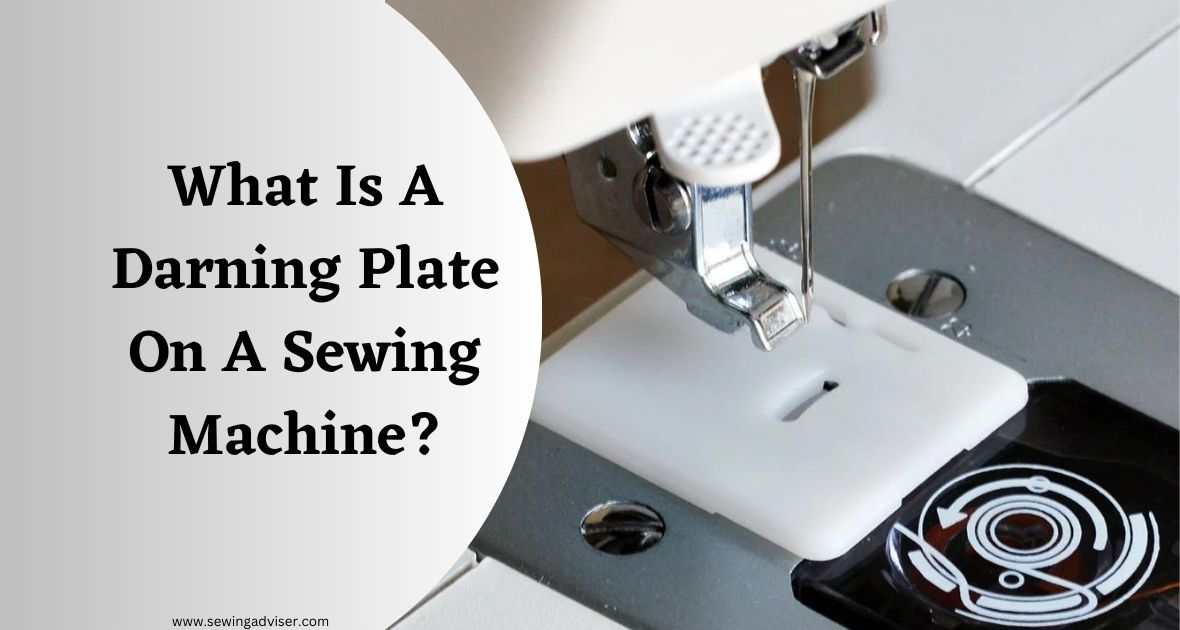
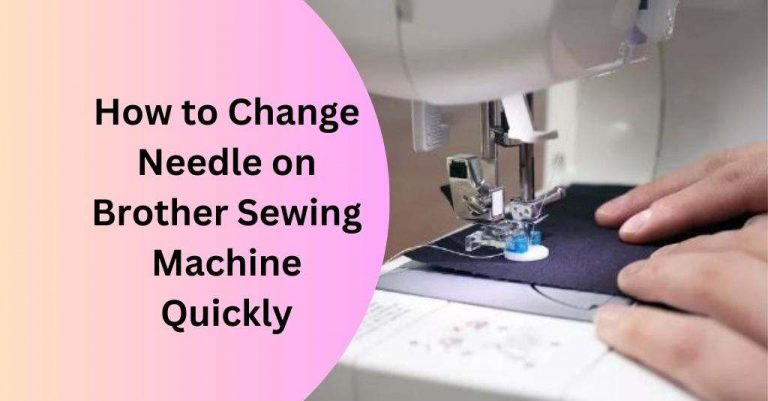
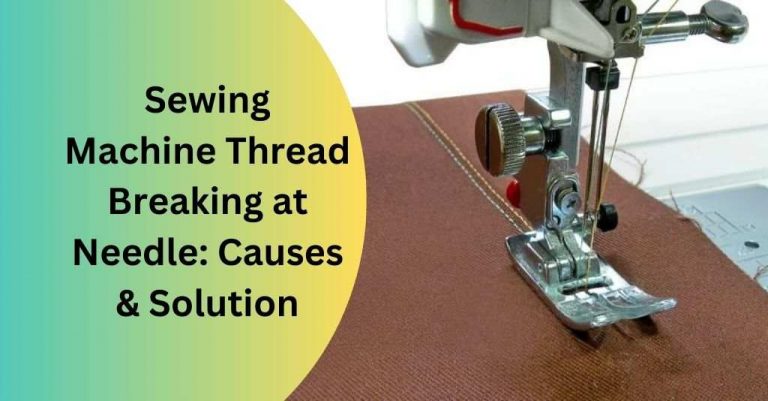
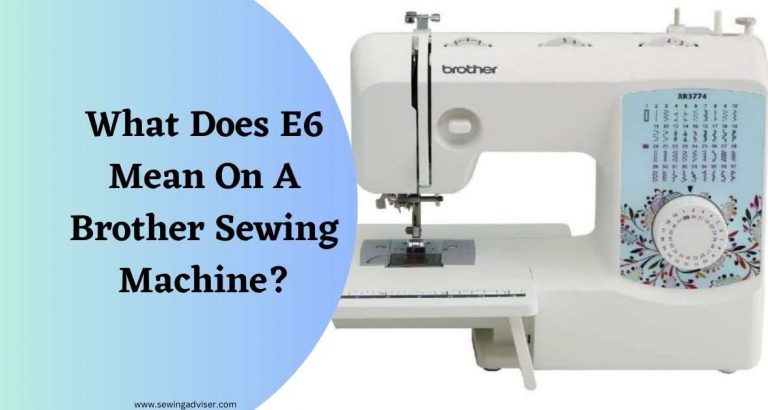
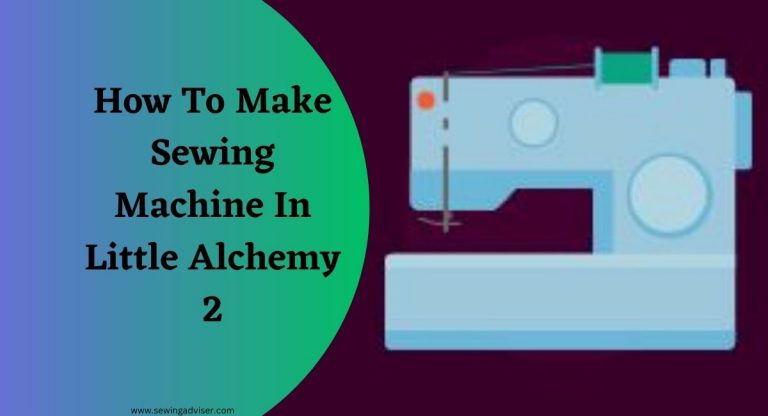
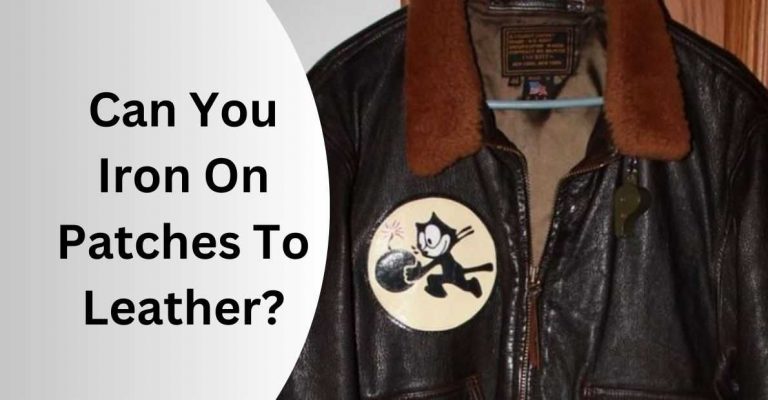
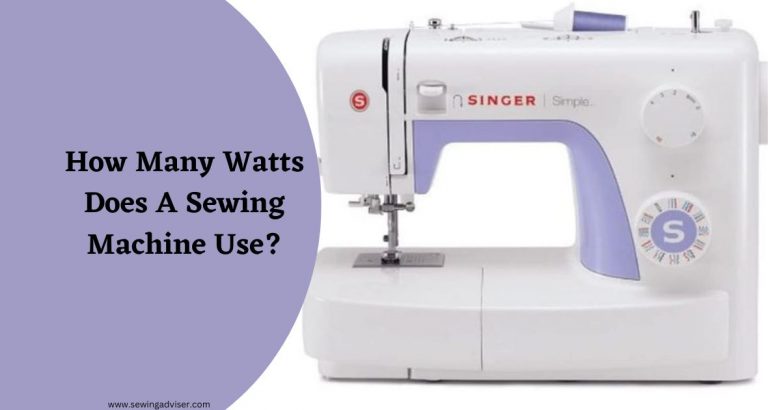
5 Comments